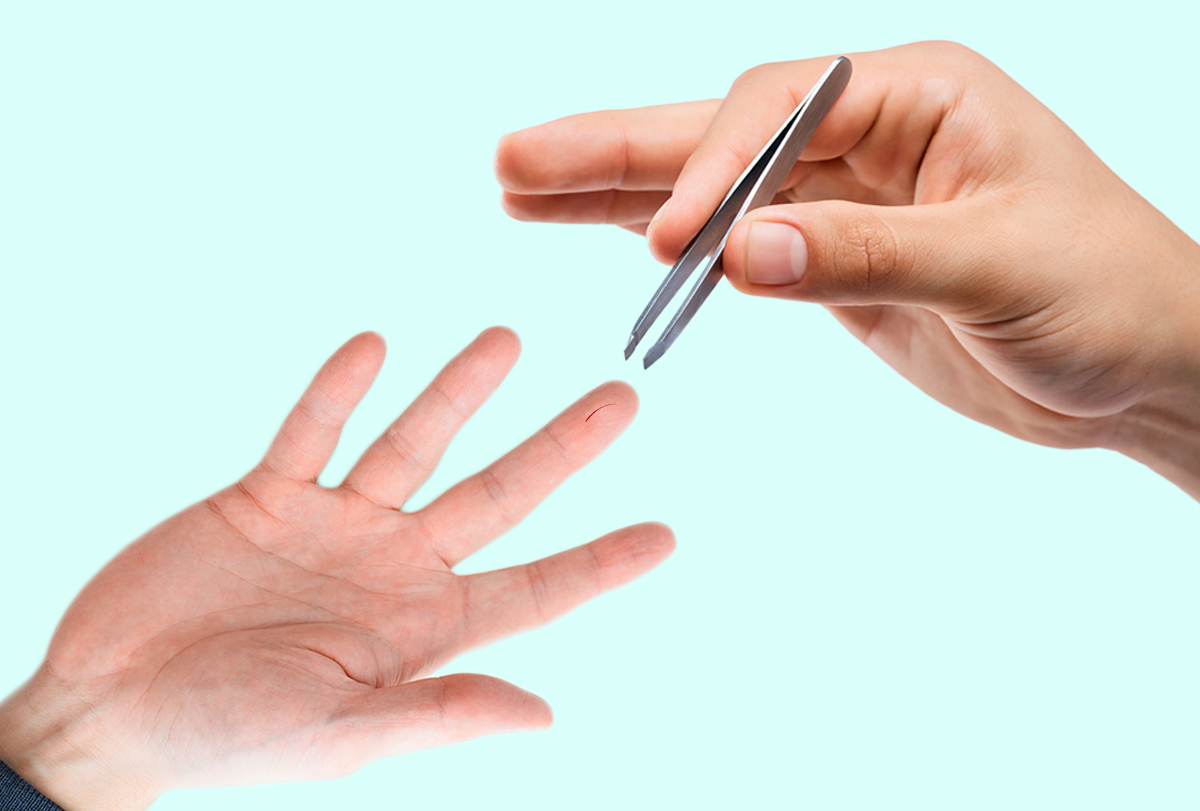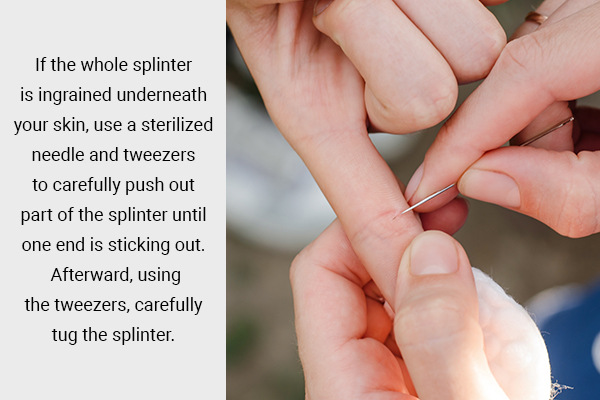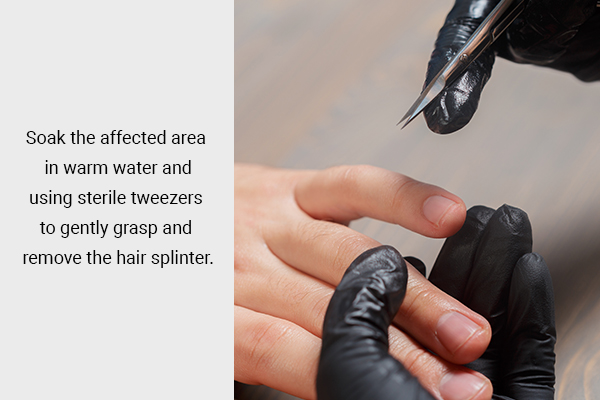In this article:
Hair splinters are tiny, sharp, and pointed hair shafts that penetrate the skin, causing pain, irritation, and inflammation. These splinters can be difficult to see and extract, and if left untreated, they can lead to infection and scarring.

Hair splinters can appear in any part of the body where hair follicles exist, but they are usually seen in the hands, feet, and legs. Removing a hair splinter requires patience, precision, and the right technique. (1)
This article will discuss the causes and symptoms of hair splinters, their treatment options, and tips and tricks for their safe and effective removal.
Removing Hair Splinters
By following these steps, you can safely remove splinters at home and prevent future occurrences. Remember to always prioritize your health and seek medical assistance if needed. (2)
1. Clean and dry the area
Wash and dry your hands and the area around the splinter.
2. Examine the splinter
If the splinter is very tiny, you can use a magnifying device to look at how huge it is and in what direction it penetrated your skin.
3. Use a pair of tweezers
If a portion of the splinter protrudes outward, use a pair of clean and sterilized tweezers to comfortably pull it out in the exact direction it passed into.
4. Use a small needle

If the whole splinter is ingrained underneath your skin, use a sterilized needle and tweezers to carefully push out part of the splinter until one end is sticking out. Afterward, using the tweezers, carefully tug the splinter.
5. Clean and use petroleum jelly
After removing the splinter, wash the region with cleanser and water, and apply petroleum jelly on it before covering it with a bandage.
Note: If the splinter is very big or deep into your skin, it is present around your eyes, or the area becomes infected, seek medical assistance. Healthcare professionals can carefully extract the splinter using the right tools and provide essential medicine to discourage infection.
Tips and tricks for safe and effective hair splinter removal
Removing a hair splinter can be tricky, especially if it is not visible or is deeply embedded in the skin.
Here are some tips and tricks for safe and effective hair splinter removal:
- Soak the affected area in warm water to soften the skin and open the pores. This can make the hair splinter easier to remove.
- Use a magnifying device or a luminous light source to locate the hair splinter. This can help you see the splinter more clearly and avoid damaging the surrounding skin.
- Use a clean tool to carefully lift the skin around the hair splinter. This can help expose the splinter and make it easier to remove.
Are there other home remedies for hair splinters?
No, it is not recommended to use home remedies such as baking soda or tape to remove hair splinters, as they can cause further damage to the skin. It is good to pursue medical help if you are unable to remove the splinter yourself.
What Do Experts Have to Say?

According to dermatologists, hair splinters can be difficult to remove and may require medical intervention. They advise against using home remedies such as baking soda or tape, as they can cause further damage to the skin.
Instead, they recommend soaking the affected area in warm water and using sterile tweezers to gently grasp and remove the hair splinter.
They also suggest using a needle to create a tiny gateway in the skin to reveal the hair splinter. They advise against digging into the skin or using nonsterile instruments as this can increase the risk of infection.
Preventing Hair Splinters
Here are some expert tips to prevent hair splinters:
- Always put on clothes and gloves that protect you while you work with your hair.
- Avoid pulling or twisting hair forcefully
- Do not use harsh chemicals or devices that can harm the hair shaft
When to See a Doctor
If you are unable to remove a hair splinter or if you experience symptoms such as fever, redness, or swelling, seek medical attention immediately. These symptoms may indicate an infection or foreign body reaction. (1)
Most-Asked Questions
What is a hair splinter?
A hair splinter is a tiny, sharp hair shaft that penetrates the skin, causing pain and inflammation.
What causes hair splinters?
Hair splinters are caused by the penetration of sharp and pointed hair shafts into the skin. This can happen when the hair is cut, shaved, or broken, and the sharp end is left behind.
Can hair splinters lead to infection?
Yes, if left untreated, hair splinters can lead to infection, pus formation, and scarring.
Final Word
Hair splinters can be a painful and annoying problem, but with the right techniques and tools, they can be safely and effectively removed.
Soaking the affected area in warm water, using a magnifying glass or bright light, applying lubricant, and using sterile tweezers or a needle can help you remove a hair splinter. However, it is important to seek medical attention if the hair splinter is deeply embedded or if you experience symptoms of infection.
Remember to take precautions to prevent hair splinters in the first place, such as wearing protective clothing and gloves when working with hair and avoiding harsh chemicals or tools that can damage the hair shaft.
By following these tips and seeking medical attention when necessary, you can safely remove hair splinters and prevent further complications.
- Was this article helpful?
- YES, THANKS!NOT REALLY


